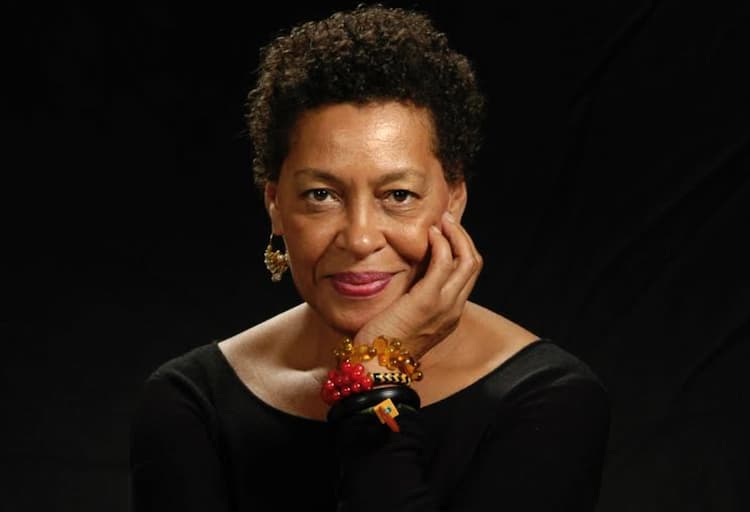Carrie Mae Weems Biography
Carrie Mae Weems is an American artist best known for her photography. She works in text, fabric, voice, digital photographs, and installation video. Her early 1990s photographic project, The Kitchen Table Series, catapulted her to fame.
How old is Carrie Mae Weems? – Age
She is 70 years old as of 20 April 2023. She was born in 1953 in Portland, Oregon, United States.
Carrie Mae Weems Family
Weems was the second of seven children born to Carrie Polk and Myrlie Weems in Portland, Oregon in 1953. In 1965, she began participating in dance and street theater. She gave birth to her sole child, a girl named Faith C. Weems, when she was 16 years old.
She left her parents’ house and moved to San Francisco to learn modern dance with Anna Halprin in a workshop Halprin had formed with numerous other dancers, as well as artists John Cage and Robert Morris.
Carrie Mae Weems Education
She decided to continue her arts education and attended the California Institute of the Arts in Los Angeles, finishing with a BFA degree at the age of 28. Her MFA is from the University of California, San Diego. Weems also attended the University of California, Berkeley’s folklore masters program.
Carrie Mae Weems Husband
She and her husband, Jeffrey Hoone, live in Fort Greene, Brooklyn, and Syracuse, New York.
Carrie Mae Weems Net Worth
She has an estimated net worth of $1 million.
Carrie Mae Weems Art
Weems’s recent photographic projects include Louisiana Project (2003), Roaming (2006), Museums (2006), Constructing History (2008), African Jewels (2009), Mandingo (2010), Slow Fade to Black (2010), Equivalents (2012), Blue Notes (2014-2015), and an expanded body of work that includes installation, mixed media, and video. Grace Notes: Reflections for Now, her most recent project, is a multimedia performance that examines “the role of grace in the pursuit of democracy.” Slow Fade to Black (2010), her most recent work, investigates the lost image and memory of African-American female entertainers in the twentieth century, including singers, dancers, and actresses, using the concept of cinematic fade.
We can’t tell if those visuals are fading in or fading out because of the freeze frame of a camera lens. The photographs depict a number of notable female African-American artists from the last century, including Marian Anderson and Billie Holiday, who have since disappeared from our cultural memory. The artists’ blurred images serve as a metaphor for the ongoing struggle for African-American entertainers to remain visible and relevant. Weems created the large-scale picture (176 sqm) Queen B (Mary J. Blige) for the 2020/2021 season at the Vienna State Opera as part of the exhibition series Safety Curtain, produced by museum in progress. Since 2008, Weems has been represented by Jack Shainman Gallery.

Carrie Mae Weems Photography Style
She became interested in photography after discovering The Black Photographers Annual, a book of photos by African-American photographers such as Shawn Walker, Beuford Smith, Anthony Barboza, Ming Smith, Adger Cowans, and Roy DeCarava. This brought her to New York City and the Studio Museum in Harlem, where she met other artists and photographers including Coreen Simpson and Frank Stewart and formed a group. In 1976, Weems enrolled in a photography workshop given by Dawoud Bey at the Museum and worked as an assistant to Anthony Barboza. She returned to San Francisco but lived on both coasts after Janet Henry invited her to teach at the Studio Museum and a photographer’s community in New York.
Family Pictures and Stories, Weems’ first collection of photographs, text, and spoken word, was released in 1983, and it investigated the migration of black families from the South to the North. Her later shows, Ain’t Jokin’ and American Icons, were both about racial jokes and internalized racism. In the 1980s, Weems abandoned documentary photography in favor of staging representations that appeared to be documents. Her The Kitchen Table series, which focused on sexism and the role of tradition in family interactions, made sexism a central theme.She expressed her amazement and concern over the absence of pictures of black communities in mainstream media and attempted to reflect these excluded topics through her work.These images made it possible for other black female artists to make art.
Carrie Mae Weems Exhibitions
The Frist Center for the Visual Arts in Nashville, Tennessee, hosted the first full retrospective of her work in September 2012, as part of the exhibition Carrie Mae Weems: Three Decades of Photography and Video. The exhibition, curated by Katie Delmez, ran until January 13, 2013, and then proceeded to the Portland Art Museum, the Cleveland Museum of Art, and the Cantor Center for Visual Arts. The Solomon R. Guggenheim Museum in New York City had a 30-year retrospective show in January 2014. It was the first time a “African-American woman [was] ever given a solo exhibition” at the Guggenheim.
Weems’ work was featured in the Frist Center’s 30 Americans gallery in October 2013, among works by black artists ranging from Jean-Michel Basquiat to Kehinde Wiley. Weems hosted The Shape of Things exhibit at the Park Avenue Armory in 2021.
Her first solo exhibition in Germany, The Evidence of Things Not Seen, will be held at the Württembergischer Kunstverein Stuttgart in 2022. The Barbican Centre in London presented Weems’ first big UK show, Reflections for Now, in 2023, which featured photographic and video installations spanning three decades.
